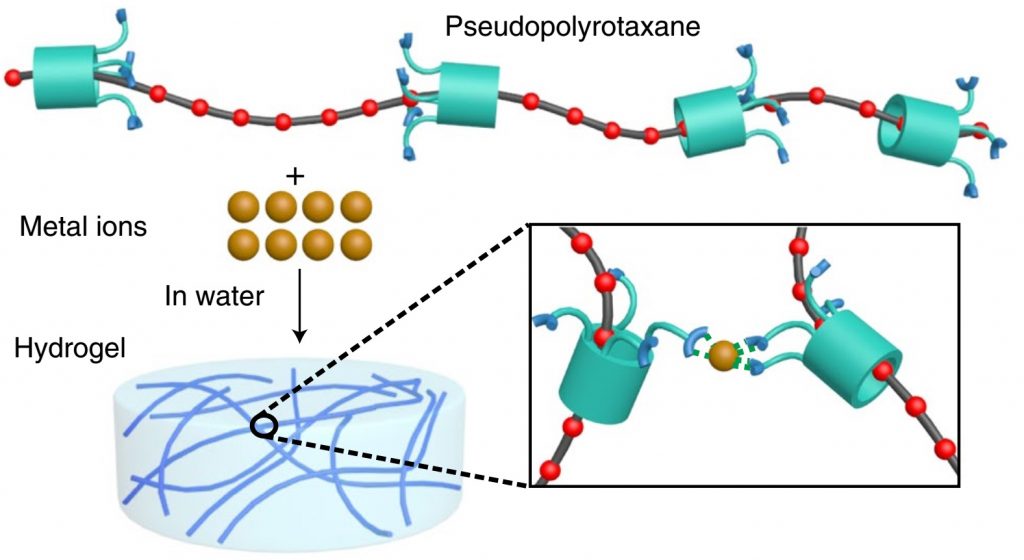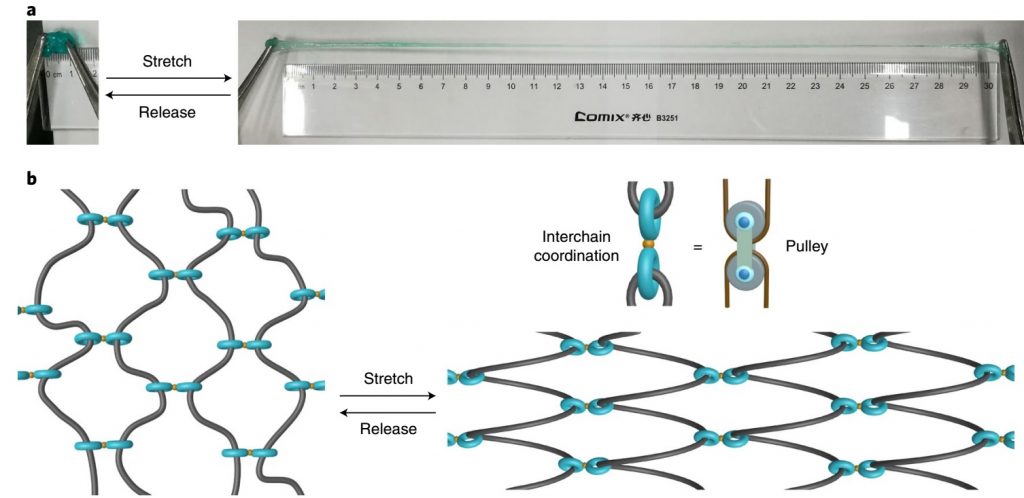Shear forces can convert a colloid of tiny solid particles (a sol) into a gel. This process is similar to the biological activities that biological systems are capable of self-healing and could lead to dramatic changes in the smart materials sector.
Researchers at Southern University of Science and Technology (SUSTech) and the Shenzhen Grubbs Institute have found a way to use shear forces to create a self-assembled supramolecular hydrogel from a sol. Professor Jiang Wei led the research group to publish the paper in Nature Chemistry entitled, “Shear-induced assembly of a transient yet highly stretchable hydrogel based on pseudopolyrotaxanes.”
Molecular self-assembly is common in the biological world, which possesses larger and complicated structures with highly specific functions. Bio-inspired synthetic versions have been built in recent decades, but they are usually stable in thermodynamic terms, unlike their biological counterparts.

Traditionally, supramolecular hydrogels are destroyed by shear forces that convert them to a sol. Recent experiments by others have indicated that it is possible to see transient self-assembly processes induced by a shear in select cases. This has been observed in moderate shear rates, with colloidal particles and non-specific interactions often involved.
In their experiments, copper ion was added to a solution of pseudopolyrotaxanes, a type of mechanically interlocked molecule of strings and rings. These particular pseudopolyrotaxanes were created by threading molecular tubes onto polyethene glycol chains.
The ions in the copper (II) nitrate solution coordinate on an intrachain basis, and there are almost no cross-links between pseudopolyrotaxanes. The shear forces would destroy any intrachain coordination, resulting in rapid interchain coordination. Interchain coordination creates cross links and gelation, thereby making the material thicker.

Professor Jiang Wei’s team found that the resultant hydrogel was highly stretchable, up to 30 times more than its not-stretched length. It would also revert back to its original sol state if left overnight at room temperature, but merely shaking it with sufficient force would see the gel state return. Degradation of the gel would start to occur after 5 cycles, and the overall outcome indicates that this is similar to the self-healing properties of some biological materials. The gel was also found to be much stronger and better in its mechanical properties than other similar structures.
There are applications for the research in materials science. The gel appears to mimic natural self-healing process, and the research team believes that the dissipative self-assembly of the gel could prove to be very adaptive, and it could find many uses in a wide range of industries.
The Department of Chemistry and Shenzhen Grubbs Research Institute are the communication units and Professor Jiang Wei is the only correspondent. The experimental work was mainly completed by Dr. Ke Hua. Dr. Yang Liu-Pan, research assistant professor of the Academy of Advanced Interdisciplinary Studies, Ph.D. students Chen Zhao and Yao Huan, and postdoctoral researcher Dr. Xie Mo also participated in the research work.
The team is continuing to work in this area, focusing on the mechanical properties of the material they have created. Professor Jiang Wei, Dr Ke Hua and Dr Yang Liu-Pan have filled a patent application that deals with elements of the research that has been published.
The research team received funding from the National Natural Science Foundation of China (NSFC) and the Open Project of the State Key Laboratory of Supramolecular Structure and Materials at Jilin University. The authors thank the Materials Characterization and Preparation Center at SUSTech for the use of their facilities, as well as C.A. Schalley, Z.-T. Li, W. Lu and S. Craig for their valuable suggestions and comments. The paper is dedicated to Y. Liu and J. Rebek.
Original article: https://www.nature.com/articles/s41557-019-0235-8
Proofread By
Photo ByDepartment of Chemistry